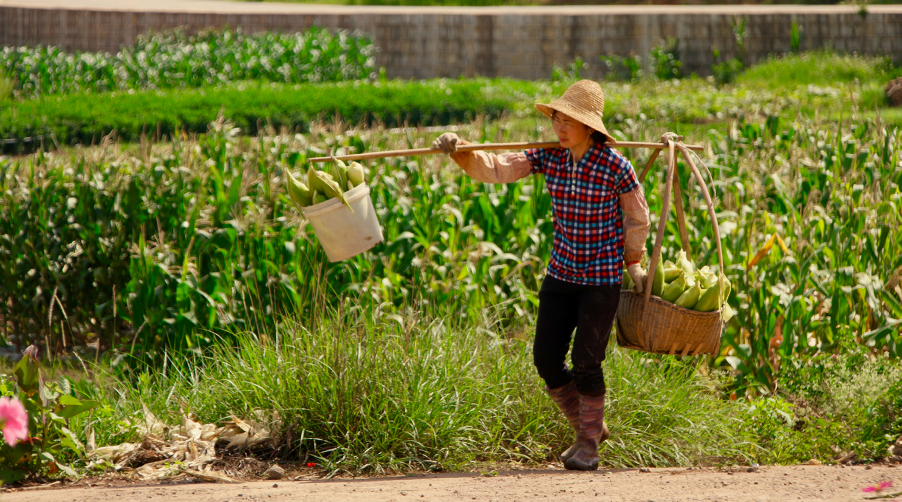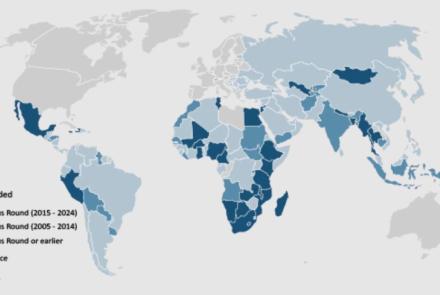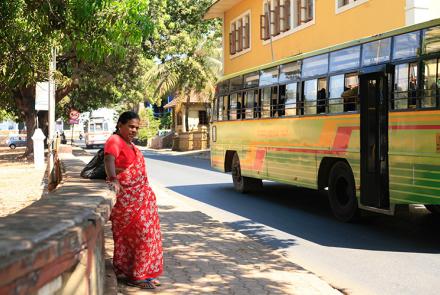MEASURING PAID WORK IN CHINA: LESSONS LEARNT FROM THE CHINA FAMILY PANEL STUDY (CFPS)
Yingchun Ji, Shanghai University and Xu Yan, University of Maryland
What is work? The answer to this seemingly straightforward question varies individually and collectively. In particular, when it comes to the measurement of paid work by women, who are more likely to work in the agricultural, informal sector across the globe, how the question is phrased in a survey is critical to get a full picture of women’s labor force participation. In this brief report, we use recent data from the China Family Panel Study (CFPS), to provide a clear illustration of how a change in question wording can lead to different estimates of women’s participation in paid labor.
The China Family Panel Study (CFPS) is a nearly nationwide longitudinal survey launched by Peking University. It collects individual-, family-, and community-level data, gathering a wealth of information for studying social phenomena in contemporary China. The baseline survey in 2010 interviewed 14,960 households and 42,590 individuals living in these households. Thus far, five follow-up surveys have been conducted (2011, 2012, 2014, 2016, and 2018)1 .
The 2010 baseline survey asked a question “Do you currently have a job?” The responses suggest that only 41.99% of women over age 15 in the sample responded positively (see Figure 1). This is much lower than the female labor force participation rate (LFPR) given by International Labor Organization (ILO)2 , which is 63.78%; and the estimate by the Chinese National Bureau of Statistics (CNBS)3 , which is 63.73%.
What may account for such discrepancy? One possible explanation is that the word “job”, “Gongzuo” in Chinese, may be interpreted by a respondent as full-time, formal employment with regular pay. Interestingly, the question “Have you ever had any formal work experience for more than six successive months?” appears right before the question of “Do you currently have a job?” It is plausible that women who engage in seasonal agricultural work with non-regular or no payment, or those working informally in small businesses, are answering no to this question. Ethnographic interviews conducted by one of the authors corroborates this observation. For example, in Ji’s team’s fieldwork in the Yangtze Delta in China in 2018, the interviewer asked a woman whether she had a job (Gongzuo) or not, she gave a negative answer. Later in the interview, however, she revealed that she raised silkworm, chicken, and pigs, and weaved sweaters for some small family run business to support children’s daily expense. When probed why she said she did not have a job, she explained that she only considered going to a factory or a Danwei (work unit in China) as a real job to her4 .
Figure 1: Women’s (age 15 and over) labor force participation rate using CFPS 2010 data

If we use the time use data from CFPS2010, we get a higher percentage of women’s involvement in paid work (51.40%, see Figure 1). Yet this figure is still much lower than the abovementioned official female labor force participation statistics. Why is this the case? We speculate that there could be two reasons. First, instead of using time diaries, the respondents were only asked to retrospect the number of hours they spent on working full- and part-time per day on average in the last month. Although all income generating activities were counted as work, women who did not realize the profit-making nature of their activities or who did not work on a regular basis, especially those in seasonal employment, might not report those as work. Second, there was no way to report secondary work activity, which might also lead to the underreport of paid labor when women were multi-tasking. Thus, the stylized time-use questions may still underestimate the extent of paid labor work.
The employment questions were redesigned in wave 2012 of CFPS. Besides the original question of “Do you currently have a job?” a new series of questions were added:
- Have you worked for at least one hour last week?
- Do you have a job, but you are currently on temporary vacation, sick leave or other vacation, or on-the-job training?
- Will you return to the original job position in a certain period or within six months?
- Are you running your own business which is currently in an off-season, but will resume after a while?
- Is your agricultural work (including cropping, managing orchard, collecting agricultural and forestry products, fish farming, fishing, raising livestock, selling agricultural products in market, etc.) in an off-season?
Using these new questions, we estimate the percentage of women who are currently doing paid work to be 58.12%, as compared with 46.00%, using the same question from 2012 (see Figure 2). Substantial increases in the estimates are observed among both rural and urban women, 14% and 10%, respectively. When decomposing by occupational sectors (results not shown), the great majority of the work that these questions have captured (but not by the original question) are in the sector of “agricultural, forestry and animal husbandry,” “salesperson and purchaser”, “street cleaners, garbage collectors” and “clothes designers, tailors and sewers.” They reflect an emerging informal sector that characterizes women’s work.
Figure 2: Women’s (age 15 and over) labor force participation condition using CFPS 2012 and 2014 data

In 2014, CFPS dropped the original question of “do you currently have a job” and further redesigned the “Have you worked for at least one hour last week question” into “Including agricultural work, waged job, self-employment and private business (household and unpaid help do not count, have you worked for at least one hour last week”. Other questions remained unchanged. This change of question, combined with the potential increase of data collection quality further increase the percentage of women who are currently doing paid work to 59.41% (see Figure 2). After adding the 1.16% unemployment rate (to keep it consistent with the calculation of LFPR), this figure is very close to the estimate presented by ILO (62.93%).
A question beyond the scope of this brief is, how well the ILO, CNBS and CFPS can capture work activities in the rapidly expanding internet related “new” sectors such as online retailing and social media influencer economy. Understanding the complexity as regard to the time schedule and pay structure is essential to characterize the changing nature of work in the 21st century.
1 Xie, Y., & Lu, P. (2015) The Sampling Design of the China Family Panel Studies (CFPS), Chinese Journal of Sociology, 1(4): 471-484
2 see https://data.worldbank.org/indicator/SL.TLF.CACT.FE.ZS?locations=CN
3 see http://www.stats.gov.cn/tjsj/pcsj/rkpc/6rp/indexch.htm
4 Ji,Y., Xu,R, Lin,Z., Chen,F., & Yang,S. Interweaving Patriarchal Norms and New Gender Practices: Women’s Provision of Care for Parents and Parents-in-Law in Contemporary China. Unpublished manuscript.
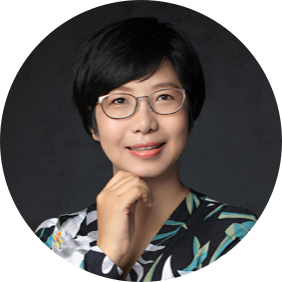
Yingchun Ji is the Eastern Scholar Professor in the School of Sociology and Political Science at the Shanghai University. Her research interests include family sociology, gender studies, and low fertility in China, and quantitative, qualitative and mixed methods. In addition to empirical research, Dr. Ji has dedicated herself to developing localized theories to understand changing gender and family dynamics in post-reform China, and to understand low-fertility in present China as well as in East Asia from a gender perspective. Currently, Dr. Ji is developing a theory called Mosaic Familism to understand reinstitutionalization of Chinese family.
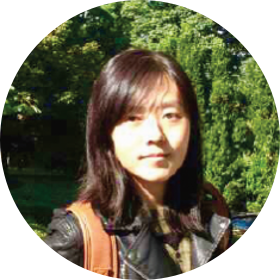
Xu Yan (Hope) is a doctoral student of the Department of Sociology at the University of Maryland and a research assistant of the India Human Development Survey (IHDS). She earned a master’s degree in gender studies from the London School of Economics and a bachelor’s degree from the University of Nottingham Ningbo China. Prior to attending the University of Maryland, she worked for China Family Panel Studies (CFPS) at the Peking University. Her current research interests include gender stratification, and inequalities in health and healthcare utilization.
Photo by Matt Briney on Unsplash
- Log in to post comments

